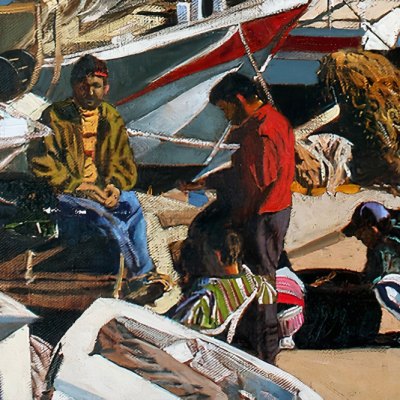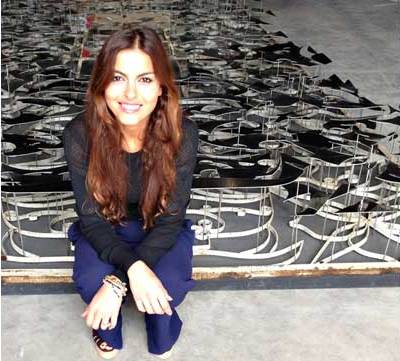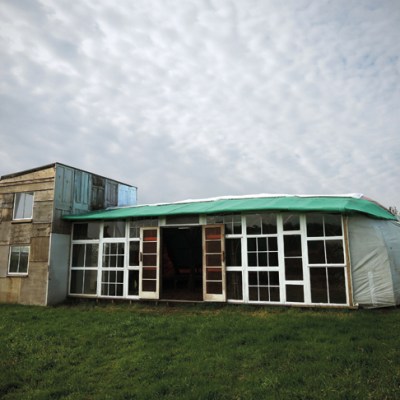
The Azerbaijani artist Aida Mahmudova (b. 1982) is one of a number of contemporary artists from the Caucasus region whose work is gaining international attention, not only for its formal innovation but also for the way it engages with questions of heritage, displacement and identity. As her work continues to travel beyond Azerbaijan, it offers a lens through which to consider post-Soviet experiences in a global context.
Mahmudova’s most recent exhibitions in London demonstrate the growing refinement of her visual language. At the Saatchi Gallery last summer, ‘A Room with a View’ was a thoughtful exploration of the emotional resonance of place, bringing together painting, sculpture and installation to create immersive environments that used topography as a means of exploring psychology.

The idea of landscapes as more than just physical terrain is central to Mahmudova’s practice. Her works render landscape as a repository of individual and collective memories, where identity takes shape through recollection, erosion and reconstruction. Rather than depicting specific sites, she abstracts elements of the natural world into tactile surfaces, inviting viewers to inhabit an environment shaped as much by absence as by presence.
Upon entering the exhibition, viewers encountered Mahmudova’s material vocabulary: thick layers of cement, resin and paint were built up, scraped back and re-layered, resulting in a surface that felt geologically formed. Her use of industrial materials, cement in particular, suggests the permanence of architecture, yet this solidity is undermined by gestures of decay as surfaces crack, chip or threaten to collapse. These signs of entropy hint at how memory gets worn down or reshaped over time.

Mahmudova has previously described her process as intuitive: the materials themselves, as much as the artist’s hand, dictate the outcome. The works are not planned in advance but emerge when emotional or intellectual impulse meets material resistance. This improvisational quality lent the exhibition in London an organic feel: each piece felt like a fragment unearthed from a larger, buried history. Mahmudova came of age during Azerbaijan’s post-Soviet transformation, and much of her work reflects on the rapid shifts in the country’s social and urban landscape. The works grapple with themes of displacement, impermanence and cultural memory – concerns shared by a generation of post-Soviet artists reckoning with ruptured histories and the realities of transition.
On the heels of ‘A Room with a View’ came Mahmudova’s next exhibition, ‘The Window’, at Gazelli Art House. Each work was a window of sorts, but in Mahmudova’s hands they were not so much thresholds between two exterior spaces as portals into an interior world, one of contemplation and reflection.

For all its interiority, Mahmudova’s work is closely attuned to the natural world. Her use of organic matter – sand, soil, dried plant material – casts this world not as pristine landscape but as lived environment, marked by human intervention and environmental stress. Though never overtly political, her work aligns her with artists whose concerns are more explicitly ecological, such as Andy Goldsworthy or Giuseppe Penone.
By inviting us to consider her landscapes as sites of memory, Mahmudova gives us a view of the world not as it is, but as it is felt, imagined and remembered. It reminds us that some losses are irretrievable, and that however we may try to rebuild from ruined environments, some absences will always be felt.

To read more about Aida Mahmudova and her work, visit her website.


